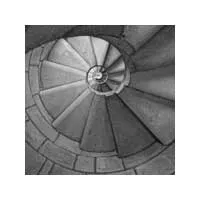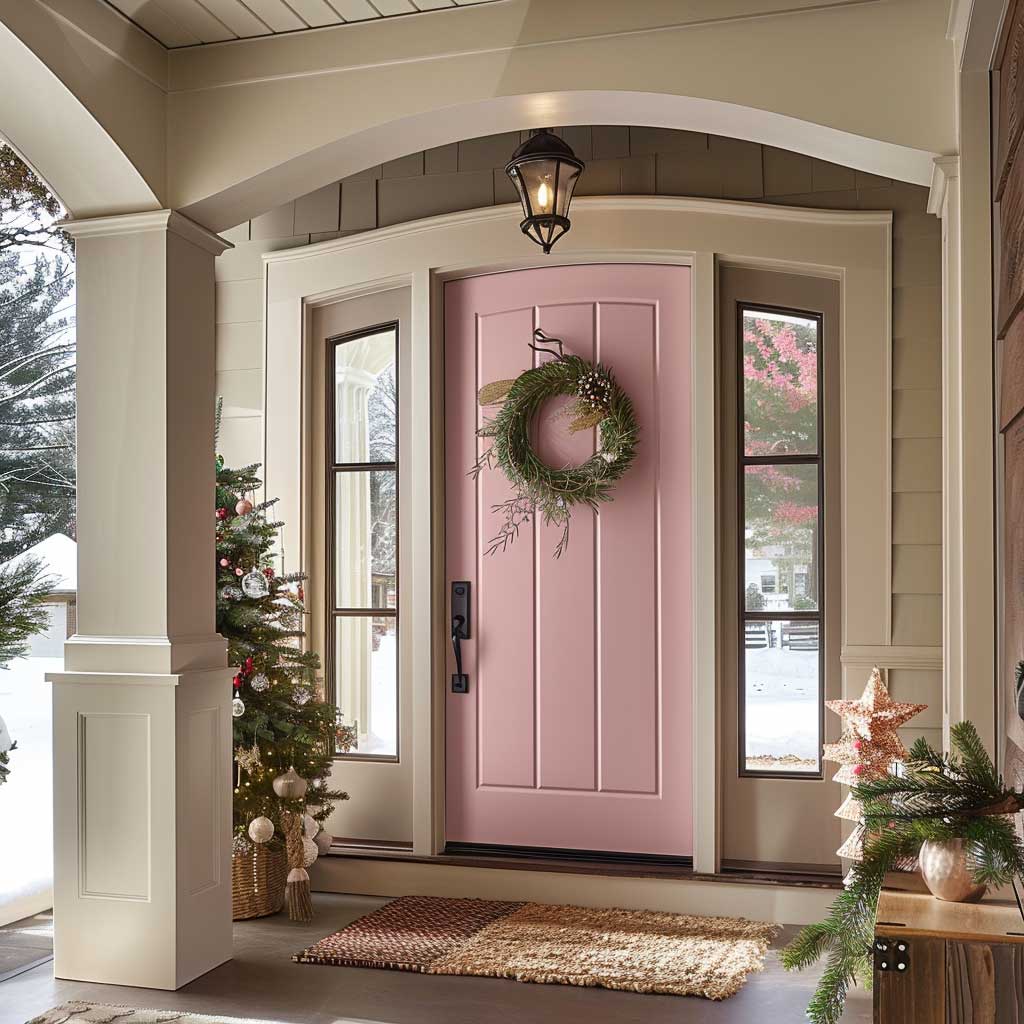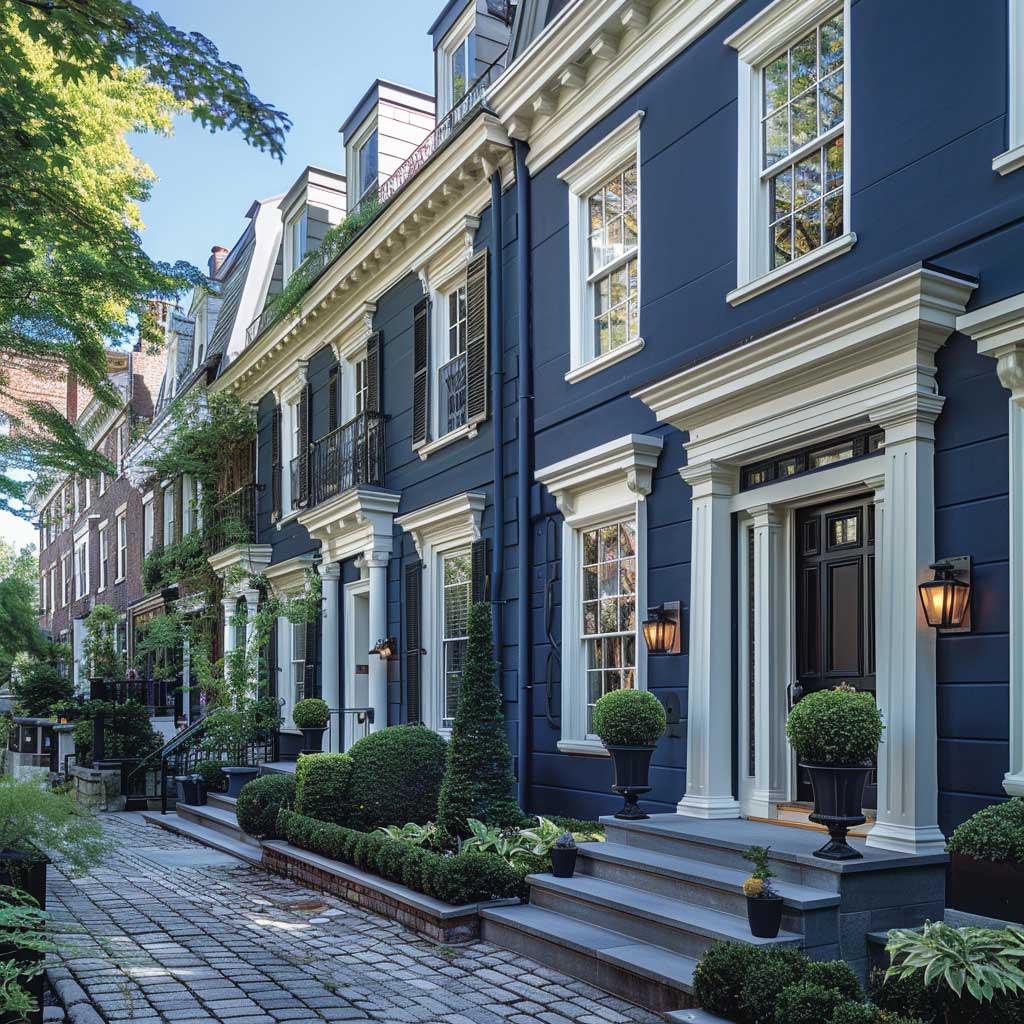In the world of interior design, the integration of Bauhaus principles with primary color palettes has emerged as a trendsetter, offering a bold and functional approach to house interiors. This aesthetic, rooted in the Bauhaus movement’s emphasis on simplicity, functionality, and the use of primary colors, creates spaces that are not only visually striking but also immensely practical. The fusion of these elements can transform any living space into a masterpiece of modern design, where every piece serves a purpose, and every color tells a story.
Primary Colors Unleashed: A Modern Approach to Color Palette for House Interior



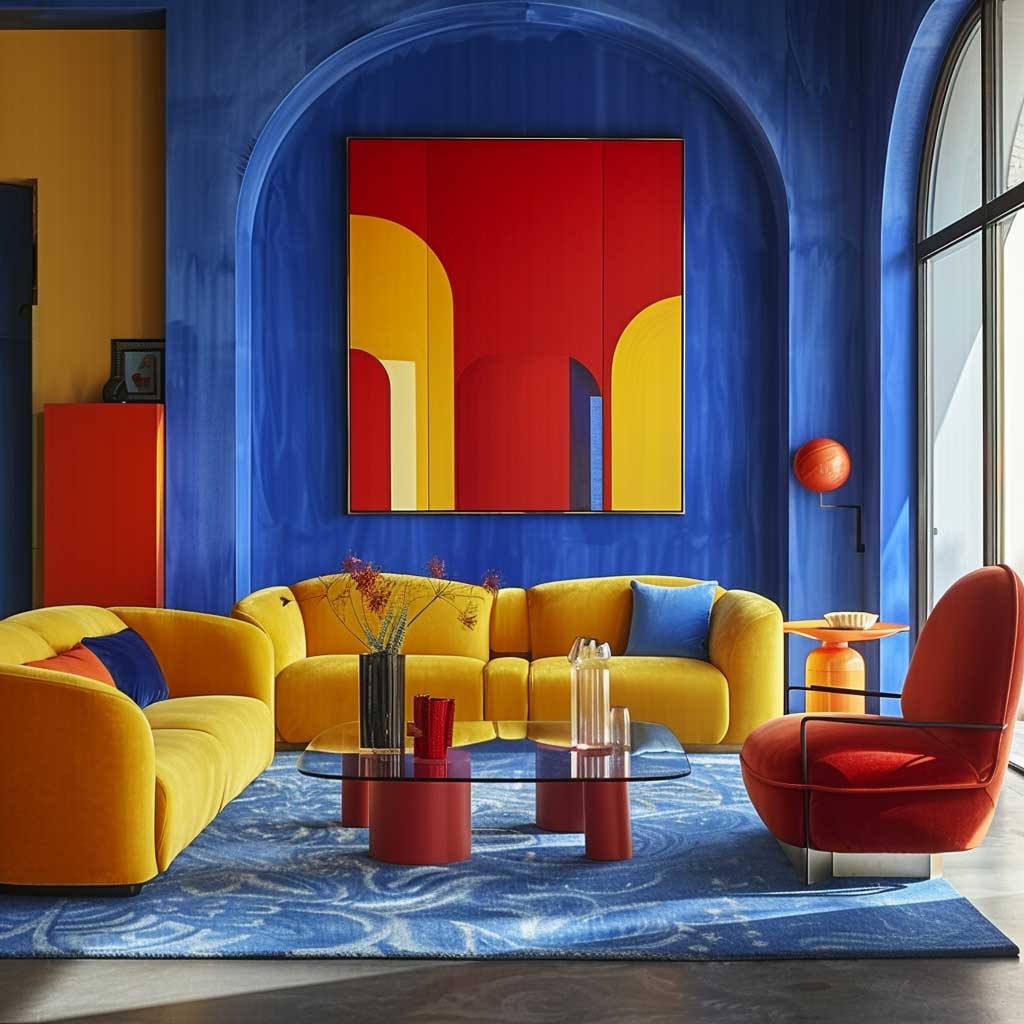
In the realm of interior design, the deliberate selection of a color palette for a house interior can drastically alter the atmosphere and functionality of the space. Taking a bold step into the vibrancy of primary colors presents an unparalleled opportunity to infuse life and energy into modern living spaces. The essence of this approach is perfectly captured in a living room that embraces primary colors not as mere accents but as the focal point of its design.
Imagine entering a room where the walls greet you with a bold blue hue, a color known for its calming yet profound depth. This choice of wall color immediately sets a dynamic backdrop, against which vibrant yellow furniture and red decorative pieces boldly stand. The contrast is striking, drawing the eye and stirring the imagination. Such a room is not just a space but a statement, a testament to the power of primary colors in shaping our living environments.
In this setting, furniture inspired by Bauhaus principles complements the vivid color scheme. Bauhaus, a movement that champions simplicity, functionality, and rationality in design, finds a harmonious match in the straightforwardness of primary colors. The furniture, characterized by clean lines and minimalist design, serves practical purposes while enhancing the aesthetic appeal of the room. The integration of Bauhaus-inspired pieces with the primary color palette highlights the room’s functionality without compromising its modern appeal.

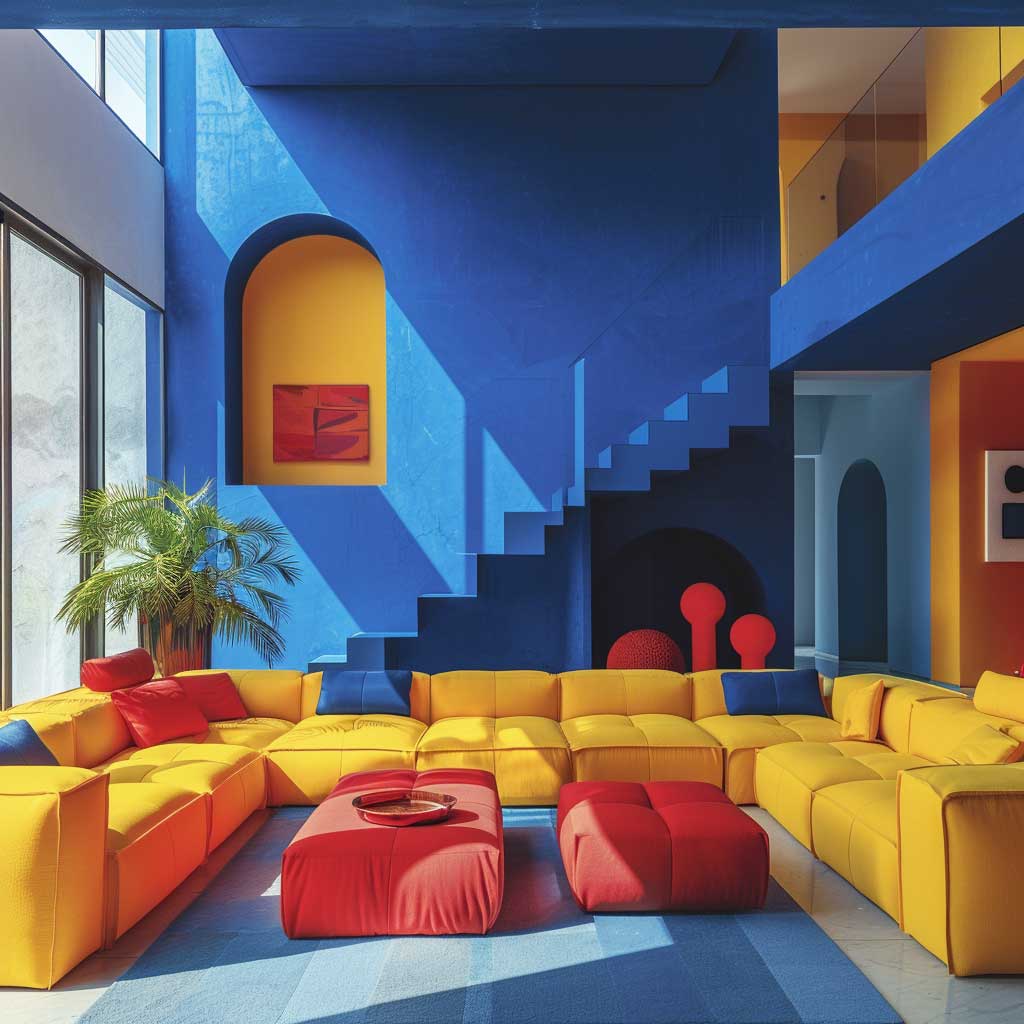
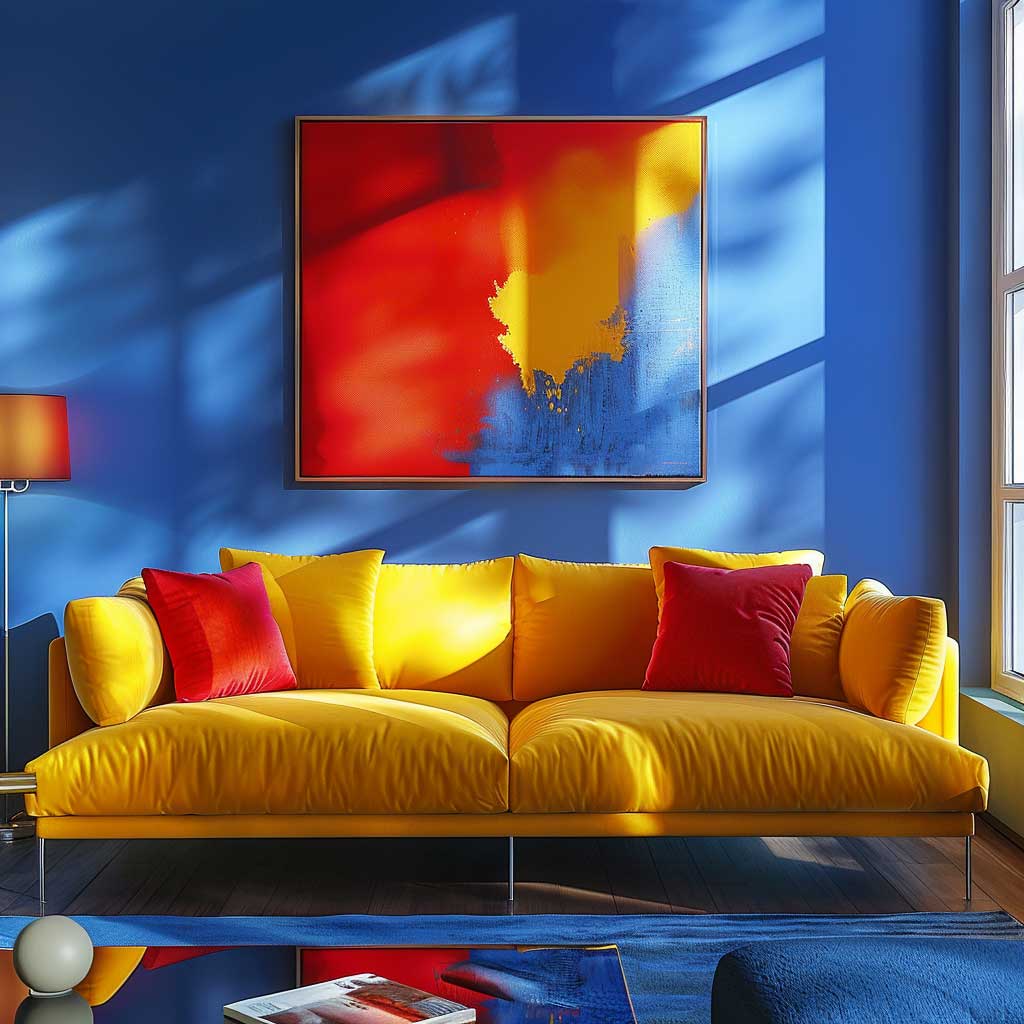

Natural light plays a crucial role in this interior, as it not only illuminates the space but also enhances the vibrancy of the colors. The interplay of light and color creates a dynamic visual experience that shifts throughout the day, making the room feel alive. This living room, thus, becomes a canvas on which the drama of light and color unfolds, showcasing the transformative power of a well-chosen color palette for house interior design.
Through this bold use of primary colors, the room achieves a balance between energy and tranquility, between modernity and timeless elegance. It stands as a vibrant example of how colors can define the essence of a space, proving that a daring approach to the color palette for house interior design can create environments that are not only visually striking but also deeply resonant with the individuals who inhabit them.
Functional Elegance: Bauhaus Influences in Color Palette for House Interior
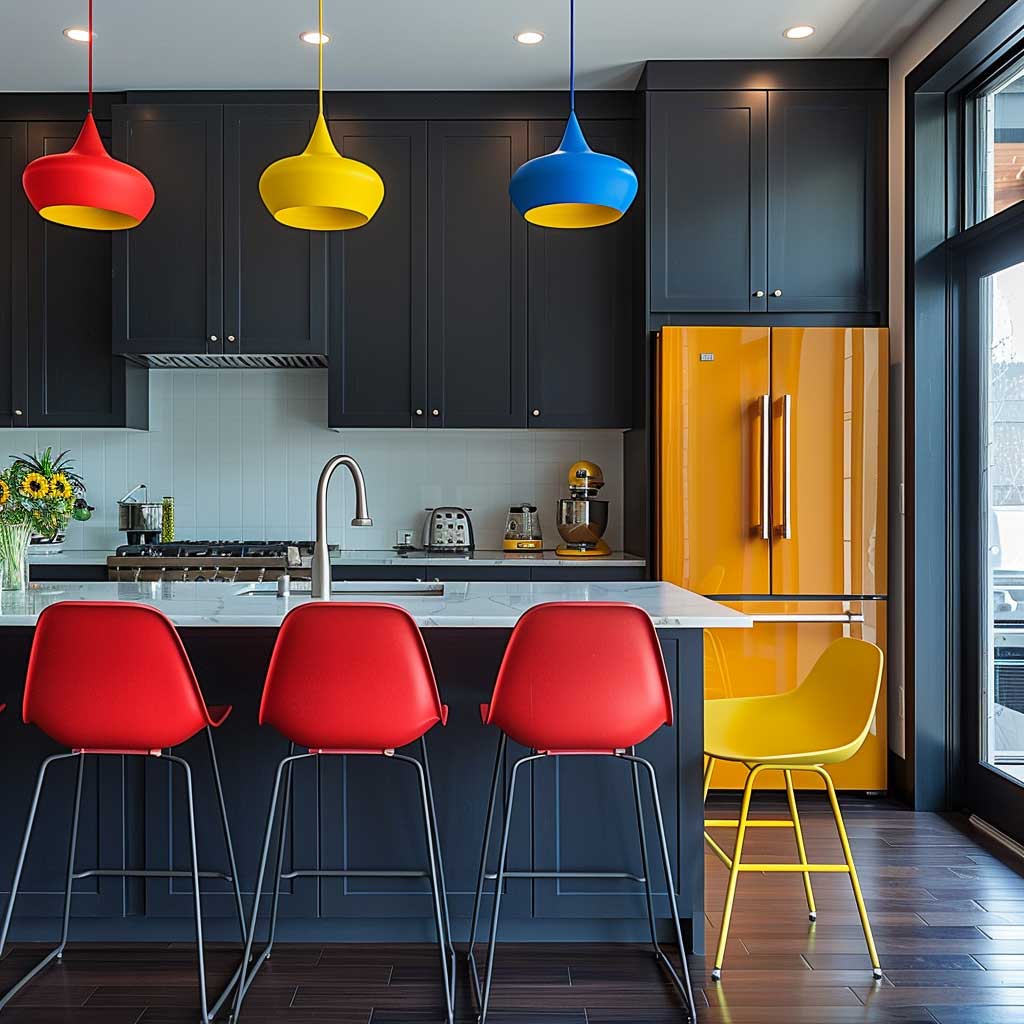
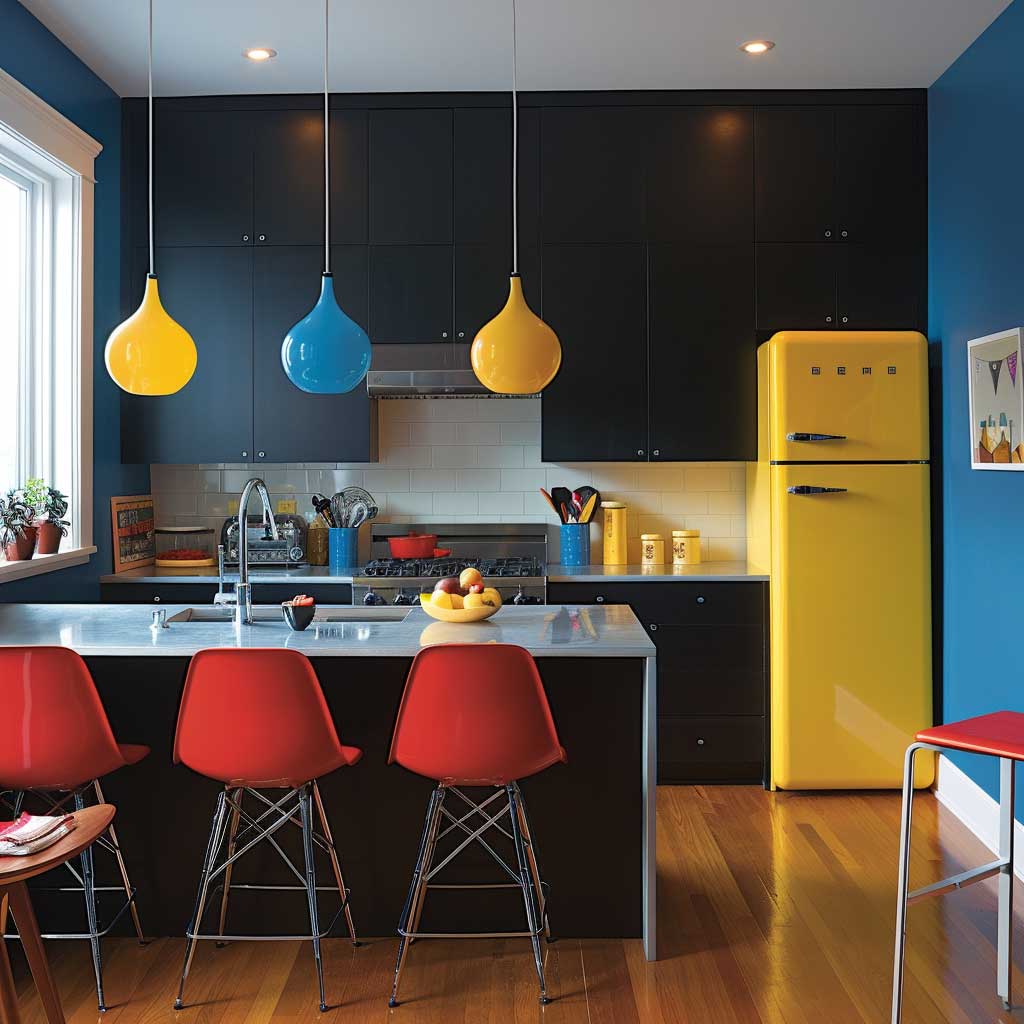


The fusion of Bauhaus design principles with a thoughtful color palette for house interiors introduces an aesthetic of functional elegance that transcends traditional boundaries. This convergence is exemplified within a kitchen space that not only serves as a culinary workshop but also as a beacon of modernist design. Here, the Bauhaus ethos of form following function is seamlessly integrated with a primary color palette, creating a kitchen that is as efficient as it is visually engaging.
Central to this design philosophy is the kitchen cabinetry, finished in a sophisticated matte black. This choice serves as a grounding element, allowing the vibrancy of primary-colored accents to truly shine. Red chairs, a yellow refrigerator, and blue lighting fixtures become focal points, each contributing to the kitchen’s dynamic character without sacrificing its functional integrity. The stark contrast between the cabinetry and the colorful accents underscores the Bauhaus commitment to clarity and simplicity in design.
In this kitchen, every element has been carefully considered to enhance both usability and aesthetic appeal. The layout emphasizes clean lines and geometric shapes, eliminating unnecessary decor to focus on the purity of the design. This minimalist approach ensures that the space remains clutter-free and conducive to culinary creativity. The strategic use of primary colors not only adds a layer of visual interest but also delineates different functional areas within the kitchen, making navigation intuitive and efficient.
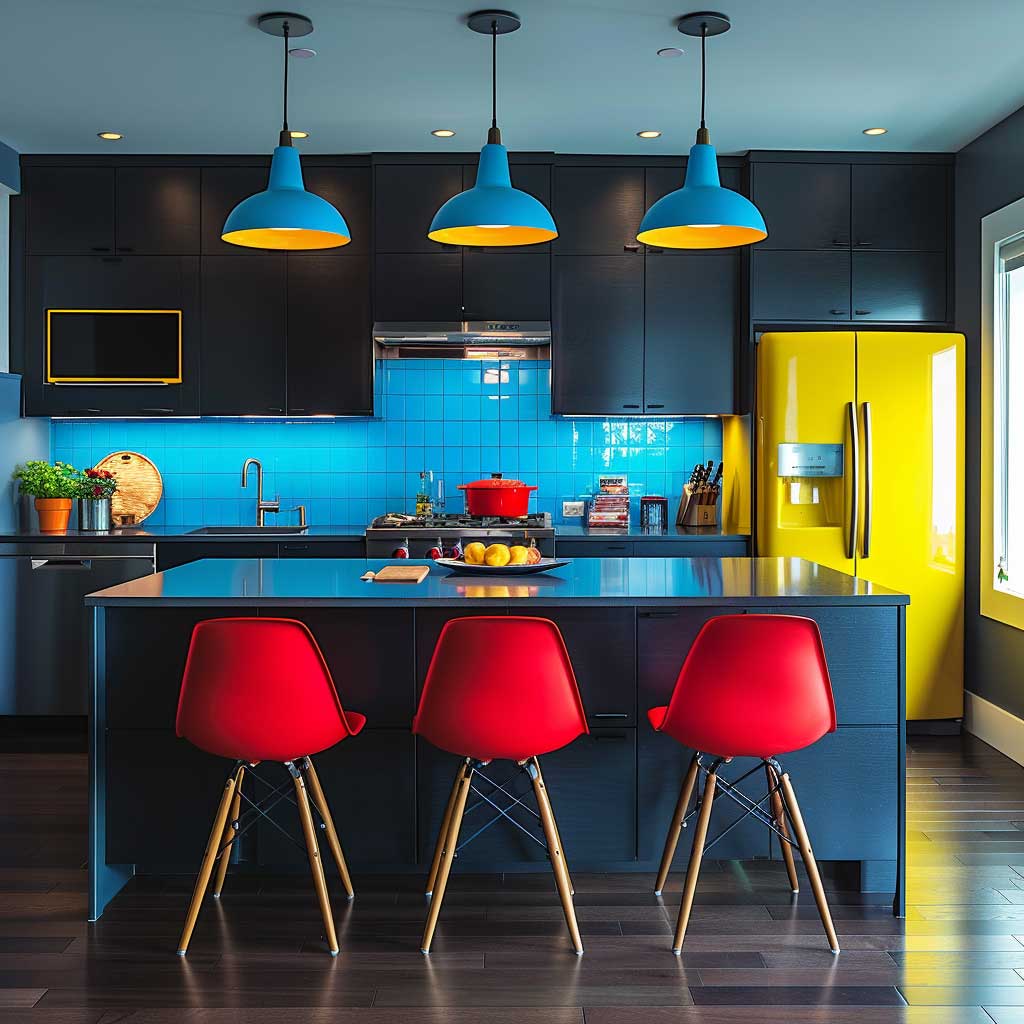
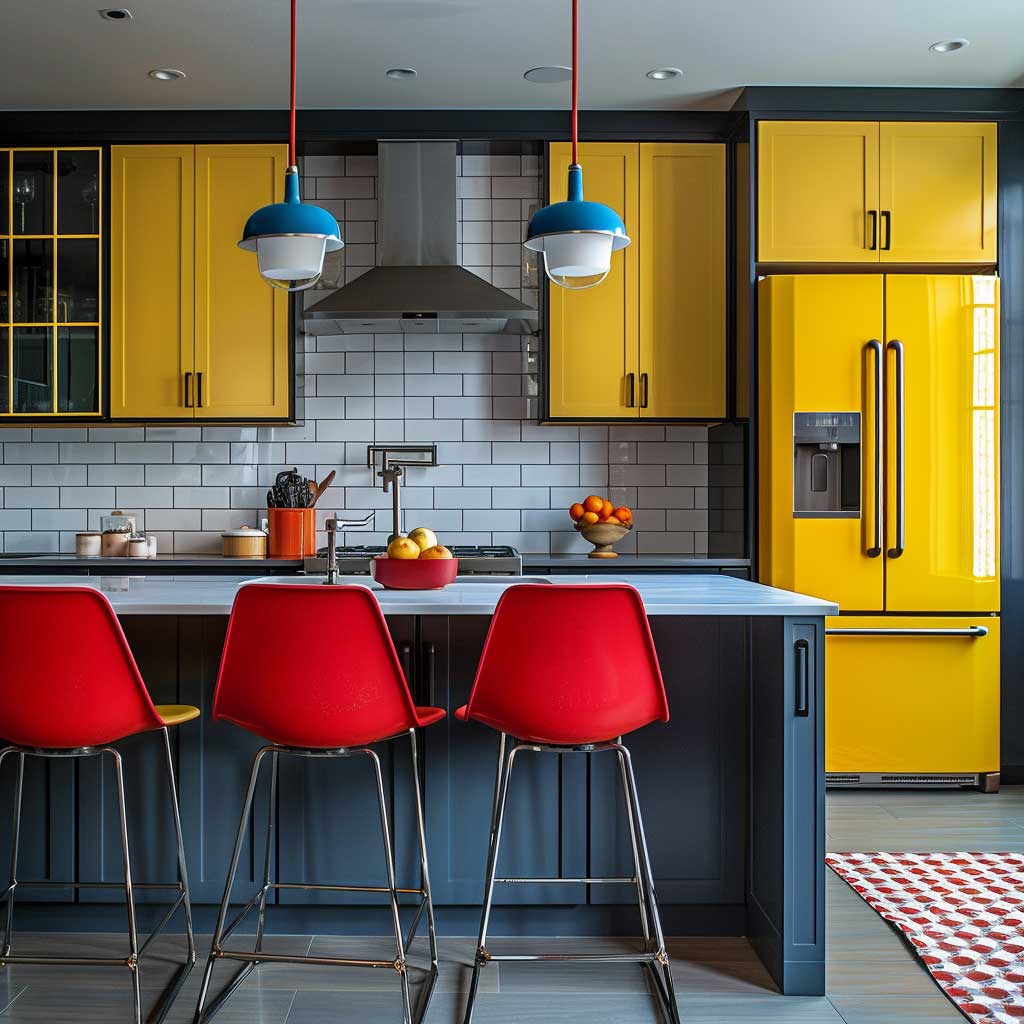
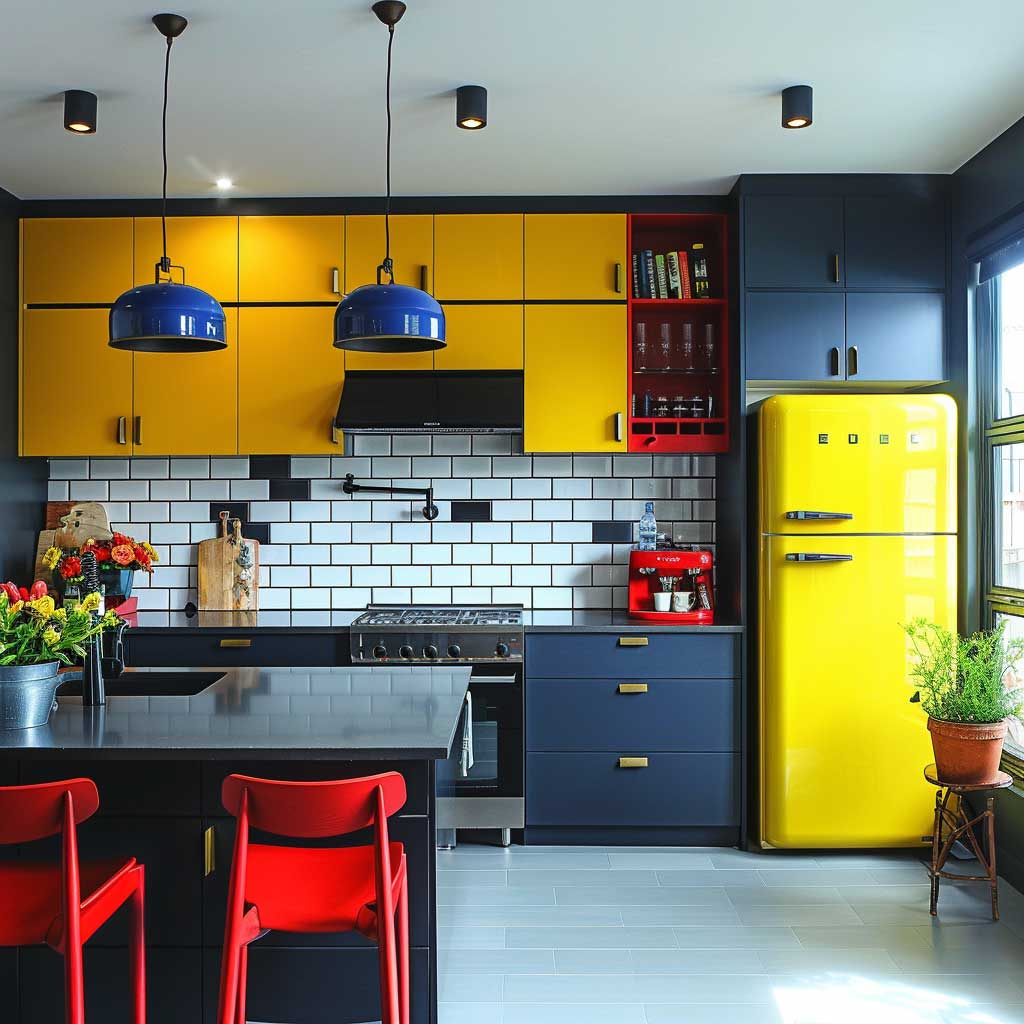
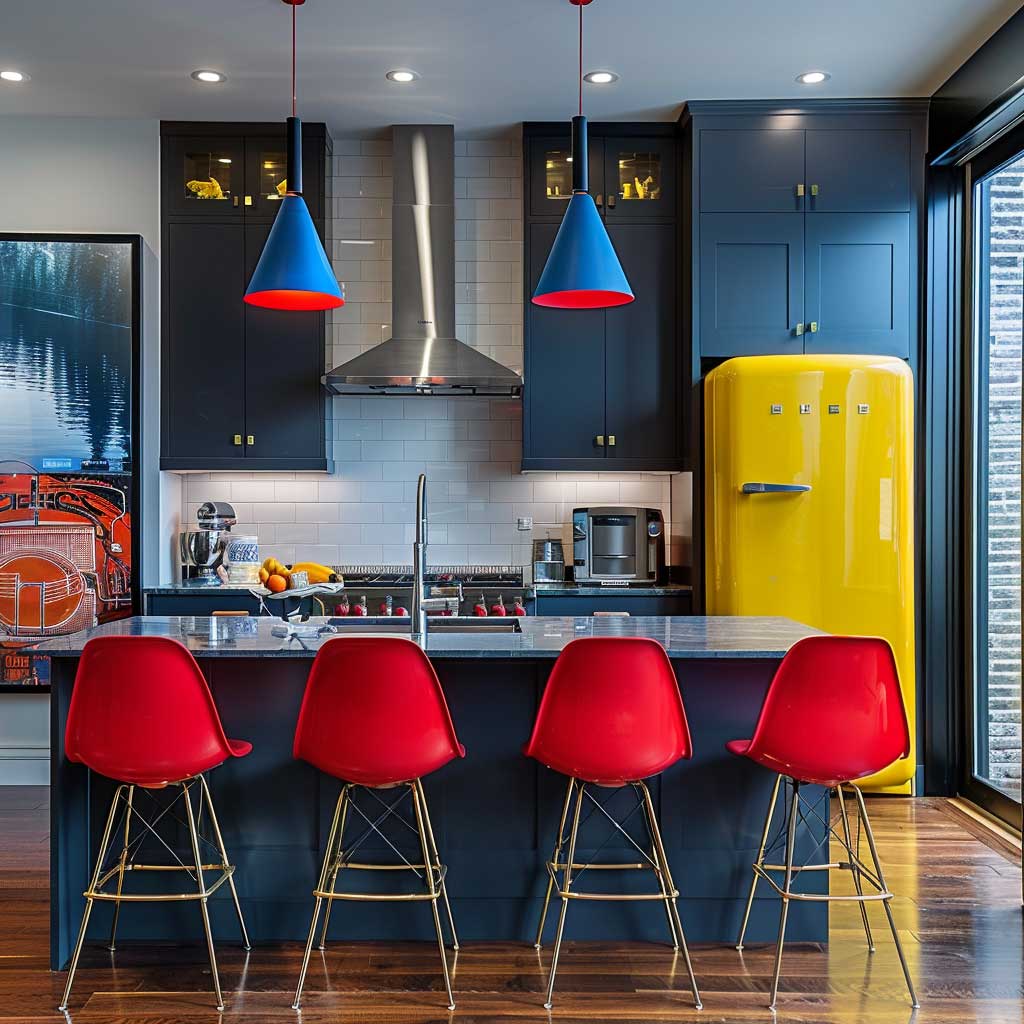
The incorporation of a primary color palette in this Bauhaus-inspired kitchen does more than just enliven the space. It also serves as a reminder of the profound impact that color has on our perception of an environment. Red stimulates appetite and passion, blue evokes calmness and serenity, while yellow brings warmth and energy. Together, these colors create an atmosphere that is both inviting and inspiring, perfectly suited to the heart of the home.
Moreover, this kitchen exemplifies how modern design can harmonize with functional requirements to produce spaces that are not merely places of task-oriented activity but also areas of beauty and creativity. The choice of a color palette for house interior, particularly one that draws from the Bauhaus tradition, reflects a deep understanding of the interplay between form, function, and color. It demonstrates that even the most utilitarian spaces can be transformed into works of art, where daily routines are elevated by the sheer elegance and purposefulness of the design.
In conclusion, the Bauhaus-influenced kitchen, with its primary color palette, stands as a testament to the enduring relevance of Bauhaus principles in contemporary interior design. It showcases how functional elegance can be achieved through the meticulous selection of color and form, making every moment spent within its bounds an experience of aesthetic delight and practical utility.
Bold Statements: Revitalizing Spaces with a Bauhaus Color Palette for House Interior


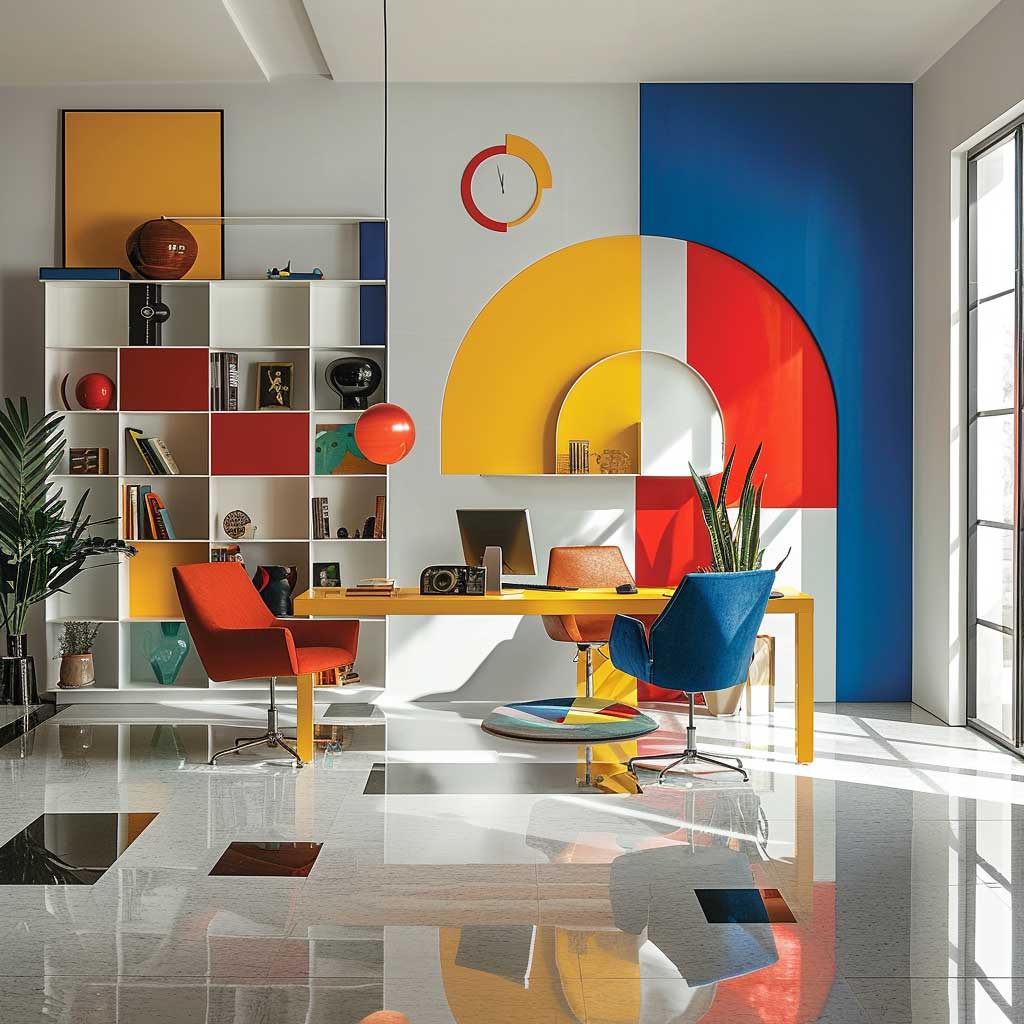

Creating a workspace that not only facilitates productivity but also serves as a source of inspiration can be a challenge. Yet, by embracing the Bauhaus movement’s ethos of blending form with function and applying a bold color palette, one can transform a home office into a vibrant hub of creativity and efficiency. This approach to choosing a color palette for house interior, particularly for a workspace, underscores the impact of color and design on our mental and physical environments.
In this revitalized home office, the stark white walls act as a canvas, accentuating the furniture and decor that follow a primary color scheme. The choice of white for the walls is deliberate, providing a sense of openness and tranquility, against which the primary colors can make a more striking impact. A large, minimalist desk in bright yellow stands proudly at the center of the room, not just as a piece of furniture but as a statement of optimism and energy. Surrounded by blue chairs and red shelving units, the desk becomes the focal point, around which the dynamics of work and creativity unfold.
The use of primary colors in this setting is strategic, with each color serving a specific purpose. Blue, known for its calming effects, is perfect for chairs where one might spend hours brainstorming or completing tasks. Red, a color that stimulates and excites, is used for shelving where resources and inspirations are kept. The yellow desk acts as a beacon of focus and creativity, encouraging the flow of ideas. This deliberate choice of colors, grounded in the principles of Bauhaus design, enhances the functionality of the space by aligning its aesthetic elements with the psychological effects of colors.
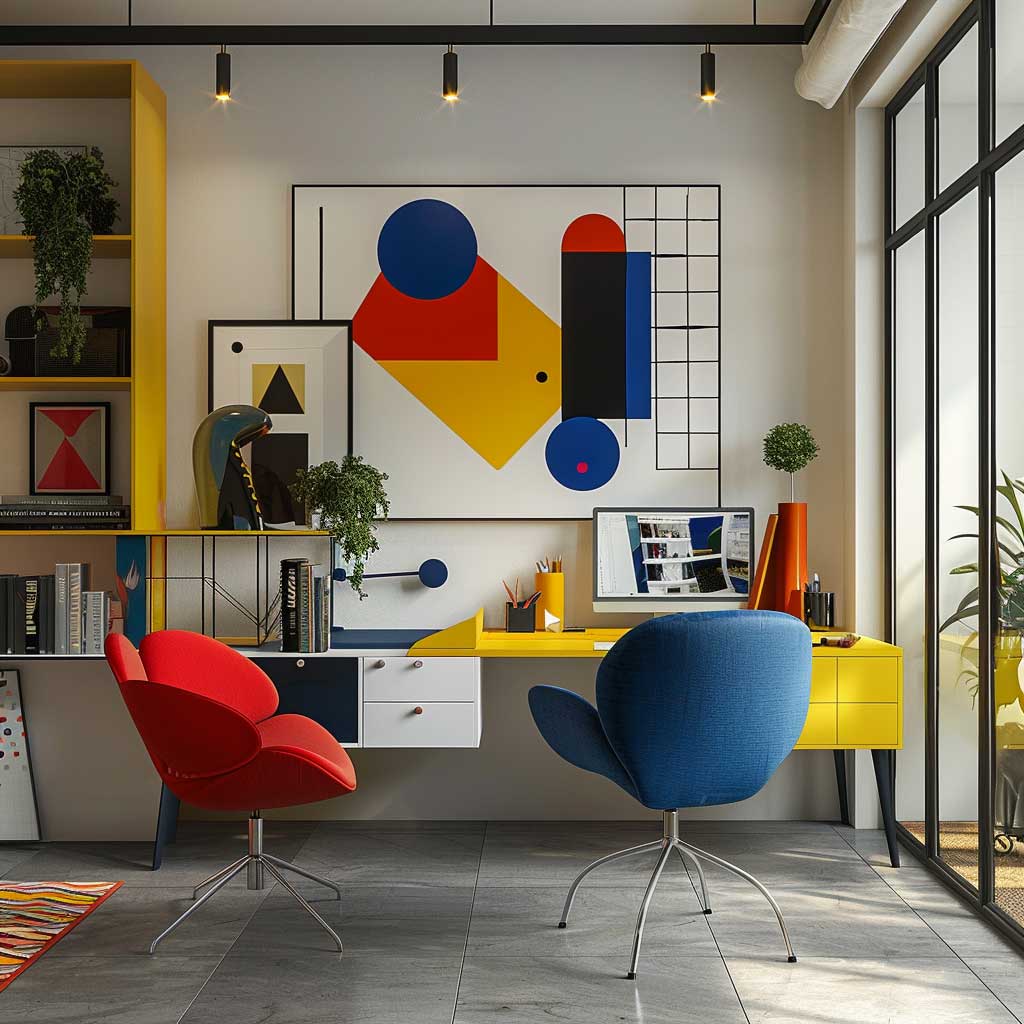


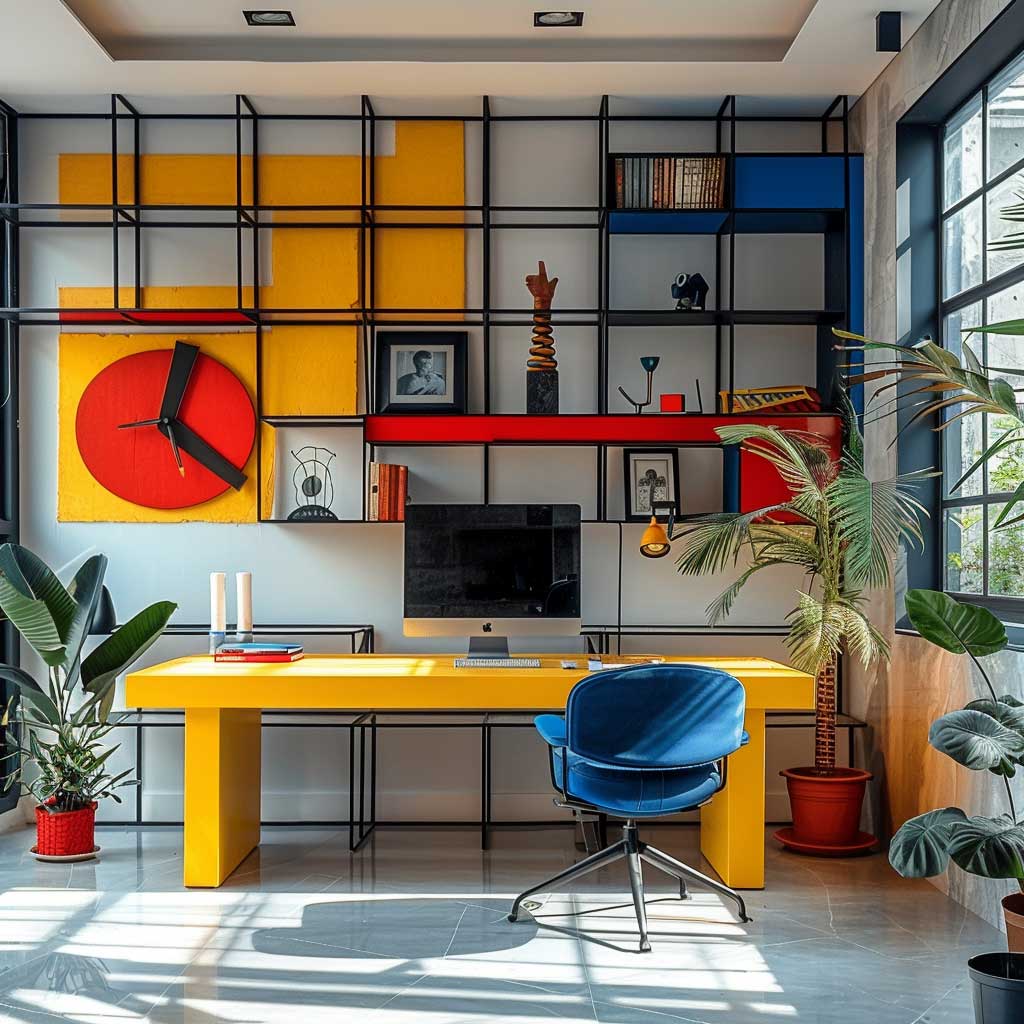
Furthermore, the Bauhaus influence extends beyond the color palette to the design of the furniture and layout of the office. The furniture is characterized by clean lines and geometric shapes, adhering to the Bauhaus principle of simplicity and utility. This minimalist approach ensures that the space remains uncluttered, promoting a sense of order and calm essential for concentration. The layout is carefully planned to maximize natural light, which interacts with the vibrant colors to create an ever-changing display that keeps the space feeling fresh and dynamic.
This home office, revitalized with a Bauhaus color palette, embodies the possibility of creating a workspace that is not only functional but also aesthetically stimulating. It demonstrates that the thoughtful application of color and design principles can transform mundane spaces into sources of inspiration and productivity. The use of a bold color palette for house interior, especially in a space dedicated to work, can have a profound effect on one’s mood and output. It stands as a testament to the power of design to influence our daily lives, reminding us that our environments play a crucial role in shaping our experiences and achievements.
Embracing the boldness of Bauhaus with a primary color palette for house interiors does more than just beautify a space; it invigorates it with a timeless elegance that is both functional and expressive. This approach not only honors the legacy of the Bauhaus movement but also invites homeowners to explore the profound impact of color on our daily lives. Through these inspired interiors, one can achieve a harmonious balance between form and function, making every room a testament to the enduring appeal of Bauhaus design principles.
